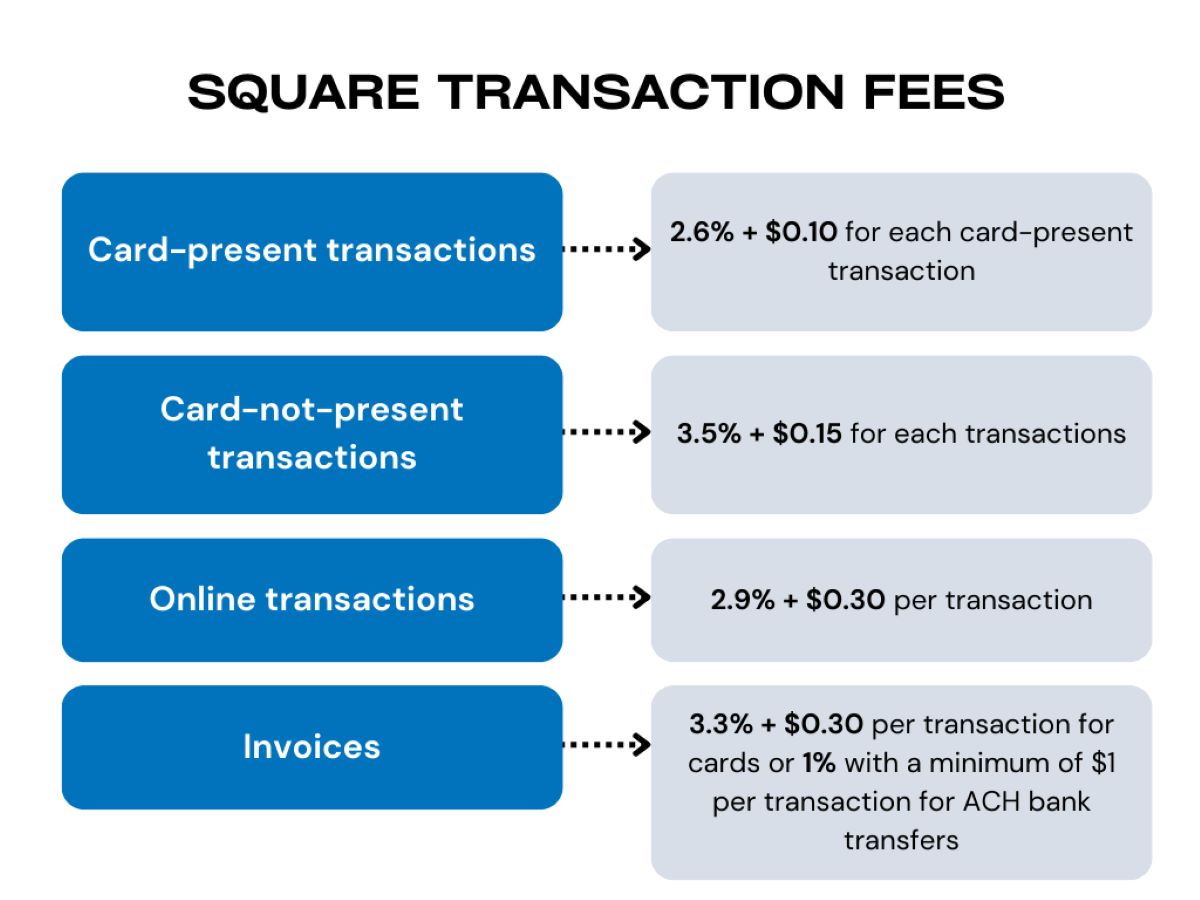

Finance
How Much Investment In Seed Funding
Published: January 17, 2024
Looking to secure seed funding for your finance business? Learn how much investment is typically required and how to navigate the process effectively.
(Many of the links in this article redirect to a specific reviewed product. Your purchase of these products through affiliate links helps to generate commission for LiveWell, at no extra cost. Learn more)
Table of Contents
Introduction
Welcome to the world of finance and investment, where opportunities to grow your wealth abound. One of the crucial steps in starting a business or bringing a startup idea to life is securing funding. While there are various types of funding available, seed funding plays a pivotal role in the early stages of a venture. In this article, we will delve into the concept of seed funding, its importance, and how to navigate the challenges of securing it.
What is Seed Funding?
Seed funding is the initial capital provided to early-stage startups or entrepreneurs to validate their business concept, develop a prototype, or conduct market research. It is often the first injection of capital that allows aspiring entrepreneurs to turn their ideas into reality.
Importance of Seed Funding
Seed funding is crucial for several reasons. Firstly, it provides the necessary financial resources for entrepreneurs to bring their ideas to life and take the first steps towards building a sustainable business. This funding can be used for market research, product development, hiring talent, and establishing an initial presence in the market.
Moreover, seed funding goes beyond just financial support. Investors or seed funding providers often bring valuable industry expertise, mentorship, and networking opportunities to the table. These resources can significantly enhance the chances of success for startups by providing guidance, connections, and insights that help in navigating the complex world of business.
Factors Influencing Seed Funding
Securing seed funding is not an easy task and is influenced by various factors. One crucial factor is the market potential of the idea or product. Investors are more likely to invest in ventures that show promise in terms of addressing a market need and have the potential for growth and scalability.
Another important consideration is the team behind the startup. Investors look for passionate and committed individuals who possess the necessary skills and expertise to execute the business plan effectively. The team’s track record, domain knowledge, and ability to adapt and pivot in response to market changes are also taken into account.
The competitive landscape and market conditions also play a role in securing seed funding. Investors assess the potential risks and challenges the startup may face, as well as the competitive advantage it holds over existing players in the market. A well-defined business model, clear value proposition, and a solid go-to-market strategy can boost the chances of securing funding.
What is Seed Funding?
Seed funding, also known as seed capital or seed investment, is the initial funding provided to startups and entrepreneurs in exchange for an equity stake in the company. It is typically obtained during the early stages of a business when the concept is still in its infancy. Seed funding serves as the foundation that enables entrepreneurs to transform their ideas into viable ventures.
The purpose of seed funding is to provide financial support to startups as they validate their business concept, develop a minimum viable product (MVP), or conduct market research. This early-stage capital is crucial for covering initial expenses such as product development, market analysis, hiring key team members, and establishing a presence in the market. Seed funding is often provided by angel investors, venture capitalists, or specialized seed funding firms.
One distinguishing characteristic of seed funding is that it typically occurs before a startup has generated any substantial revenue or achieved significant milestones. Unlike later-stage investments, seed funding is higher risk and requires investors to have a vision and belief in the future potential of the startup.
Seed funding is not only about the financial injection; it also brings added value to startups. Investors who provide seed funding often bring industry expertise, valuable networks, and mentorship opportunities to the table. This support can be instrumental in the growth and success of the startup, as investors share their knowledge and experience to help navigate the challenges of building a business.
Seed funding offers startups the opportunity to prove their concept and gain traction in the market. It enables entrepreneurs to refine their product or service based on customer feedback and market demand. This early validation is crucial for attracting further investment and future funding rounds.
Startups that receive seed funding have a higher likelihood of success compared to those that rely solely on personal savings or crowdfunding. The capital infusion allows for focused growth and development, leading to a stronger market position and increased chances of scalability.
It is important to note that seed funding is different from other types of funding such as angel investment, venture capital, or crowdfunding. While there may be some overlap in terms of investors and funding sources, the distinguishing factor is the stage at which the funding is provided. Seed funding is the initial investment that kickstarts the startup’s journey, providing the necessary resources to turn an idea into a tangible business venture.
Importance of Seed Funding
Seed funding plays a vital role in the early stages of a startup or entrepreneurial venture. It provides the necessary financial resources and support to turn ideas into reality and kickstart the journey towards building a successful business. Here are some key reasons why seed funding is important:
1. Turning Ideas into Action: Seed funding allows entrepreneurs to take their ideas from the conceptual stage to the execution phase. It provides the initial capital needed to develop a prototype, conduct market research, and validate the business concept. Without seed funding, many innovative ideas would remain dormant and unrealized.
2. Fueling Growth and Development: Startups require capital to grow and scale. Seed funding provides the necessary resources to hire key team members, invest in product development, and establish a presence in the market. This funding serves as a catalyst for growth, allowing startups to seize opportunities and gain a competitive edge.
3. Attracting Further Investment: Seed funding acts as a stepping stone to attract additional funding in later funding rounds. A startup that has proven its concept and demonstrated early success is more attractive to venture capitalists and angel investors. Seed funding provides the validation and momentum needed to secure follow-on investments.
4. Enhancing Credibility: Having external investors provide seed funding adds credibility and validation to the startup. Investors who believe in the business and its potential can act as strong advocates, opening doors to valuable networking opportunities, partnerships, and mentorship. This support can significantly enhance the chances of success for the startup.
5. Access to Expertise and Guidance: Investors who provide seed funding often bring industry expertise and insights to the table. They can offer valuable guidance, mentorship, and strategic advice to help navigate the challenges of building a business. This support can help startups avoid common pitfalls and make informed decisions.
6. Mitigating Financial Risks: Seed funding mitigates the financial risks faced by entrepreneurs. It provides a runway to test and refine the business model, identify potential challenges, and pivot if necessary. Having a financial cushion allows startups to focus on innovation and growth without the constant pressure of immediate profitability.
7. Creating Investor Relations: Seed funding establishes a relationship with investors who share a vested interest in the success of the startup. These relationships can evolve into long-term partnerships and open doors to future funding opportunities. Building strong investor relations is crucial for sustainable growth and future fundraising endeavors.
Overall, seed funding serves as the foundation for startups, enabling them to overcome initial hurdles, attract talent, and establish a market presence. It plays a crucial role in transforming ideas into viable businesses and sets the stage for long-term success.
Factors Influencing Seed Funding
Securing seed funding for a startup is a highly competitive and selective process. Investors carefully evaluate several factors before deciding to invest. Understanding these factors can improve the chances of attracting seed funding. Here are some key elements that influence the decision-making process of seed investors:
1. Market Potential: Investors assess the market potential of the startup’s product or service. They look for ventures that address a significant market need or have the potential to disrupt an existing industry. Startups with a large addressable market and the potential for scalability are more likely to attract seed funding.
2. Experienced and Committed Team: The team behind the startup plays a critical role in securing seed funding. Investors look for passionate and committed entrepreneurs with a track record of success. The team’s domain expertise, industry knowledge, and ability to execute the business plan are key considerations. A visionary and cohesive team increases the confidence of investors in the startup’s potential for success.
3. Unique Value Proposition: A clear and compelling value proposition is essential for attracting seed funding. Startups need to articulate their unique selling points and demonstrate how their product or service stands out from competitors. Investors are drawn to startups that offer innovative solutions and demonstrate a clear competitive advantage in the market.
4. Traction and Milestones: While seed funding is typically obtained in the early stages, investors still look for evidence of progress. Startups that have achieved significant milestones or gained traction in terms of user acquisition, revenue, or partnerships stand a better chance of securing seed funding. Demonstrating early validation of the business concept can instill confidence in investors.
5. Scalability and Growth Potential: Investors seek startups that have the potential for rapid growth and scalability. They look for business models that can sustainably expand into new markets or serve a larger customer base. Startups that demonstrate a clear plan for growth and have a viable strategy for customer acquisition are more likely to attract seed funding.
6. Competitive Advantage: Investors evaluate the competitive landscape to understand how the startup differentiates itself from existing players. Startups that offer a unique or disruptive solution to a market problem have a competitive advantage. Having a defensible business model, intellectual property, or proprietary technology can also make a startup more attractive to investors.
7. Revenue Potential: While generating substantial revenue is not the primary focus at the seed funding stage, investors assess the revenue potential of the startup. They look for startups with a clear monetization strategy and a path to profitability. Demonstrating a solid understanding of the target market’s willingness to pay and the potential revenue streams can enhance the chances of securing seed funding.
8. Market Timing and Trends: Investors consider the timing and market trends when evaluating startups for seed funding. Being in an industry that is experiencing growth or riding a wave of emerging trends can make a startup more appealing. It is essential for startups to align their business concept with market demand to attract seed funding successfully.
By considering these factors and tailoring their pitch accordingly, entrepreneurs can increase their chances of securing seed funding. Building a compelling story that addresses these elements can make the startup more attractive to seed investors.
How to Secure Seed Funding
Securing seed funding for your startup can be a challenging and competitive process. Here are some key steps to increase your chances of securing seed funding:
1. Refine Your Business Plan: Create a comprehensive and well-structured business plan that clearly outlines your product or service, target market, revenue model, and growth strategy. Your business plan should demonstrate a deep understanding of your industry, competitive landscape, and market potential.
2. Build a Strong Network: Networking is essential in the startup ecosystem. Attend industry events, join entrepreneurial communities, and connect with angel investors and venture capitalists. Building relationships with potential investors and mentors can provide valuable insights and increase your chances of securing seed funding.
3. Research and Target the Right Investors: Conduct thorough research to identify investors who have a history of investing in your industry or similar startups. Tailor your pitch to their investment criteria and focus areas. Sending personalized and well-researched pitch decks can grab the attention of potential investors.
4. Develop a Minimum Viable Product (MVP): Develop a prototype or MVP that showcases the core features and value proposition of your product or service. Having a working model or tangible demonstration of your idea can attract investors and validate your concept.
5. Prepare a Compelling Pitch: Craft a persuasive and succinct pitch that clearly articulates your business idea, market opportunity, competitive advantage, and financial projections. Highlight your team’s expertise and passion for the venture. Focus on presenting a compelling story that resonates with potential investors.
6. Demonstrate Traction: Show evidence of early traction and market validation. This can include user traction, pre-orders, partnerships, or market research results. Demonstrating that your startup has the potential for growth and customer adoption can significantly increase your chances of securing seed funding.
7. Leverage Crowdfunding Platforms: Consider leveraging crowdfunding platforms to generate initial funding and showcase investor interest. Platforms such as Kickstarter, Indiegogo, or SeedInvest can help validate your idea and attract potential seed investors.
8. Seek Angel Investors: Angel investors are individuals, often successful entrepreneurs or high-net-worth individuals, who invest in early-stage startups. Look for angel investor networks or platforms that connect startups with potential investors. Engaging with angel investors can provide not only funding but also valuable mentorship and industry expertise.
9. Consider Incubators and Accelerators: Incubators and accelerators can provide access to funding, mentorship, office space, and networking opportunities. Participating in reputable programs can enhance your startup’s credibility and increase your chances of securing seed funding.
10. Be Flexible and Persistent: Securing seed funding takes time, and rejection is not uncommon. Be open to feedback, adapt your approach, and refine your pitch based on investor input. Persistence and resilience are key traits of successful entrepreneurs.
Remember, every investor has their own investment criteria and preferences. It’s essential to tailor your approach and pitch to align with their requirements. Building relationships, showcasing traction, and presenting a compelling case for your startup’s potential can significantly improve your chances of securing seed funding.
Common Mistakes to Avoid in Seed Funding
Securing seed funding for your startup is a critical step in launching and growing your business. However, there are several common mistakes that entrepreneurs should avoid to increase their chances of success. Here are some key mistakes to watch out for in the seed funding process:
1. Lack of Preparation: Failing to adequately prepare for the seed funding process is a common mistake. Entrepreneurs who approach investors without a well-researched business plan, a clear pitch, or a deep understanding of their target market are less likely to secure funding. Spend time refining your pitch, conducting market research, and understanding your competitive landscape.
2. Unrealistic Valuation: Setting an unrealistic valuation for your startup can deter potential investors. Overvaluing your business may give the impression that you are not open to negotiation or lack understanding of the market. Be realistic about your startup’s current stage, market potential, and revenue projections to set a reasonable valuation.
3. Focusing Solely on Funding: While securing seed funding is crucial, it should not be the sole focus of your startup. Investors are not solely interested in funding; they seek ventures that demonstrate long-term growth potential and a strong business model. Focus on building a scalable and sustainable business, and let the funding be a means to achieve that growth.
4. Ignoring Feedback and Advice: Disregarding feedback and advice from potential investors is a mistake that can hinder your progress. Investors often provide valuable insights based on their experience and industry knowledge. Be receptive to feedback, incorporate suggestions into your plans if reasonable, and show your willingness to learn and adapt.
5. Lack of Clarity in Communication: Unclear and overly complex communication can confuse potential investors. Ensure that your pitch and business plan clearly communicate your value proposition, target market, revenue model, and growth strategy. Use simple and concise language to convey your message effectively.
6. Inadequate Market Research: Insufficient market research can undermine your credibility and hinder your ability to secure funding. Investors want to see that you understand your target market, its dynamics, and the potential for growth. Conduct thorough market research to gather data and insights that support your business assumptions and value proposition.
7. Undervaluing the Importance of Team: Investors not only invest in ideas but also in the team behind the startup. Underestimating the importance of assembling a strong, skilled, and cohesive team can negatively impact your chances of securing seed funding. Highlight the expertise, track record, and commitment of your team members to instill confidence in potential investors.
8. Lack of a Scalable Business Model: Investors seek startups that have the potential for scalability and sustainable growth. Failing to demonstrate a clear and viable business model can deter investors. Show how your startup can generate revenue, maintain a competitive advantage, and adapt to market changes over time.
9. Targeting the Wrong Investors: Not every investor will be the right fit for your startup. Take the time to research and identify investors who have an interest in your industry or have previously invested in similar ventures. Targeting the wrong investors wastes time and resources and reduces your chances of securing funding.
10. Lack of Persistence: Securing seed funding can be a long and challenging process. It’s important to stay persistent and not get discouraged by rejections or setbacks. Learn from each experience, refine your approach, and keep pursuing potential investors who align with your business goals.
Avoiding these common mistakes can significantly increase your chances of securing seed funding for your startup. By preparing diligently, communicating clearly, and demonstrating your startup’s growth potential, you can position yourself for success in the competitive world of seed funding.
Examples of Successful Seed Funding
Seed funding has played a pivotal role in the success of numerous startups, helping them to grow and thrive. Here are a few notable examples of companies that have achieved significant success through seed funding:
1. Airbnb: Airbnb, a leading online marketplace for accommodation and experiences, started with seed funding of $20,000. Co-founders Brian Chesky and Joe Gebbia secured this initial investment to launch their platform by renting out air mattresses in their apartment during a conference. This seed funding laid the foundation for Airbnb’s exponential growth and subsequent funding rounds.
2. Uber: Uber, the global ride-hailing platform, began with seed funding of $200,000. Co-founders Travis Kalanick and Garrett Camp initially secured investments to develop and launch the app in 2010. This seed funding was instrumental in establishing the foundation for Uber’s disruptive expansion into cities worldwide.
3. Oculus VR: Oculus VR, the virtual reality technology company, raised $2.4 million in seed funding through a Kickstarter crowdfunding campaign. This initial capital allowed them to develop the Oculus Rift, a revolutionary VR headset. Eventually, Oculus VR was acquired by Facebook for $2 billion, showcasing the impact that seed funding can have on groundbreaking technology startups.
4. Stripe: Stripe, a global payments processing company, attracted seed funding of $2 million in 2011. This early investment allowed co-founders Patrick and John Collison to build and scale their platform, offering simple and secure payment solutions for businesses. Today, Stripe is valued at billions of dollars and has become a go-to solution for online payments.
5. Warby Parker: Warby Parker, an e-commerce eyewear company, secured $2.5 million in seed funding to disrupt the traditional eyewear industry. Their innovative model of offering affordable, stylish glasses with a try-at-home program gained attention from investors. Seed funding helped Warby Parker expand its product line and build a strong brand presence, enabling it to grow into a billion-dollar company.
6. Pinterest: Pinterest, the popular visual discovery platform, received seed funding of $500,000. Co-founded by Ben Silbermann, Paul Sciarra, and Evan Sharp, Pinterest gained early traction with its unique concept of bookmarking and sharing images. Seed funding allowed the team to refine their platform and attract millions of users, leading to further investments and exponential growth.
7. Zoom: Zoom, the video conferencing platform, had a humble beginning with seed funding of $3 million. Founded by Eric Yuan, Zoom quickly gained popularity for its user-friendly interface and high-quality video and audio capabilities. Seed funding helped Zoom expand its infrastructure and improve its technology, ultimately leading to its widespread adoption and significant success.
These examples highlight the transformative impact that seed funding can have on startups, propelling them from initial ideas to global success stories. It demonstrates the crucial role that early-stage funding plays in enabling entrepreneurs to turn their vision into reality and disrupt industries.
Challenges in Seed Funding
While seed funding is a crucial part of getting a startup off the ground, it comes with its own set of challenges. Here are some common hurdles that entrepreneurs face when seeking seed funding:
1. Long and Competitive Process: Securing seed funding can be a lengthy and highly competitive process. Entrepreneurs often need to pitch to multiple investors and face potential rejections before finding the right fit. The process of identifying, approaching, and convincing investors can be time-consuming and requires persistence.
2. Uncertain Valuation: Determining a fair valuation for a startup at the seed stage can be a challenge. Investors and entrepreneurs may have different expectations, which can lead to negotiations and potential conflicts. Finding a valuation that both parties are comfortable with while taking into account market conditions and the startup’s potential can be tricky.
3. Lack of Track Record: Startups at the seed stage often lack a proven track record and are in the early stages of their journey. This can make it challenging to convince investors of their potential for success. Without a history of revenue or user engagement, entrepreneurs need to rely on a strong business plan, market research, and the team’s expertise to instill confidence in investors.
4. Market Uncertainty: During the seed funding stage, startups operate in an environment of uncertainty. Market conditions, customer needs, and competition can change rapidly, making it difficult to predict outcomes. Investors may hesitate to invest in startups with uncertain market viability, leading to funding challenges.
5. Limited Financial Resources: Startups seeking seed funding often have limited financial resources and need to carefully manage their expenses. This can make it challenging to invest in the necessary resources, marketing efforts, and product development to attract investors. Entrepreneurs may need to get creative in stretching their capital and finding cost-effective solutions.
6. Alignment with Investor Expectations: Entrepreneurs need to ensure that their startup aligns with the expectations and investment criteria of potential investors. Different investors have varying preferences in terms of industry sector, growth potential, and business model. Finding investors who align with the startup’s vision and goals can be challenging but crucial for securing seed funding.
7. Maintaining Control and Ownership: Seed funding often requires entrepreneurs to relinquish some degree of control and ownership in their startup. This can be a challenging decision, as entrepreneurs want to maintain their vision and decision-making authority. Striking a balance between relinquishing control and still maintaining a significant stake in the company can be a delicate process.
8. Managing Investor Relations: Once seed funding is secured, entrepreneurs must manage their relationships with investors. This involves providing regular updates, addressing concerns, and maintaining transparency. Managing investor expectations and delivering on promises can be demanding while simultaneously focusing on the day-to-day operations of the startup.
Despite these challenges, navigating the seed funding landscape successfully can provide startups with the funding and resources needed to grow and thrive. By being prepared, persistent, and adaptable, entrepreneurs can overcome these hurdles and position their startup for long-term success.
Conclusion
Seed funding is a critical component in the journey of a startup, providing the vital resources and support needed to transform ideas into viable businesses. From securing initial capital to attracting experienced investors and mentors, seed funding offers entrepreneurs the opportunity to validate their concepts, build traction, and position themselves for future success.
Throughout this article, we’ve explored the concept of seed funding, its importance, and the factors that influence its acquisition. We’ve also discussed strategies for securing seed funding, common mistakes to avoid, and notable examples of successful seed funding. However, we must acknowledge that the path to securing seed funding is not without its challenges.
Entrepreneurs face obstacles such as fierce competition, valuations, uncertainty, and limited financial resources. However, by proactively addressing these challenges with thorough preparation, a well-crafted pitch, market research, and strong networking, the chances of securing seed funding increase significantly.
In conclusion, seed funding plays a vital role in fueling the growth and development of startups. It provides the essential resources, connections, and validation necessary to evolve from an idea to a scalable and successful business venture. By understanding the factors that influence seed funding, avoiding common mistakes, and persevering through the challenges, entrepreneurs can position themselves for success and set the stage for a promising future.
Remember that securing seed funding is not the ultimate goal, but a means to an end. It is important for entrepreneurs to focus on building a strong and sustainable business model, delivering value to customers, and continually adapting to market demands. The journey does not end with seed funding; rather, it marks the beginning of an exciting and transformative ride.














